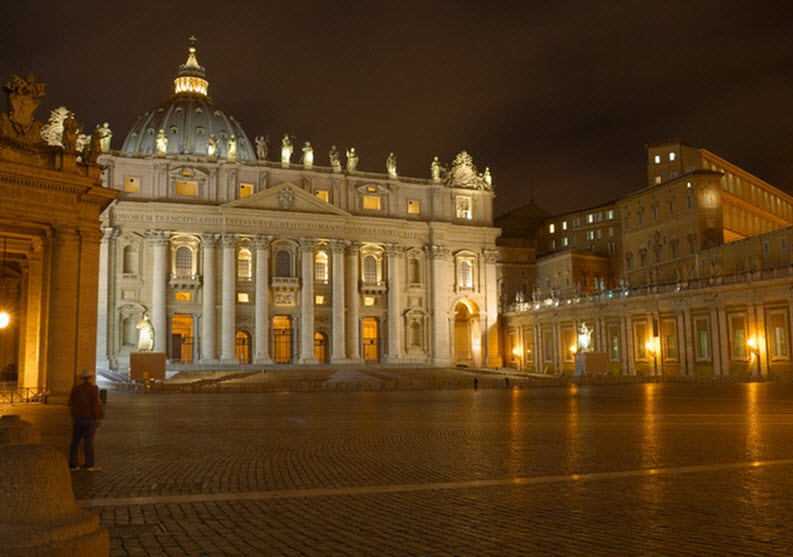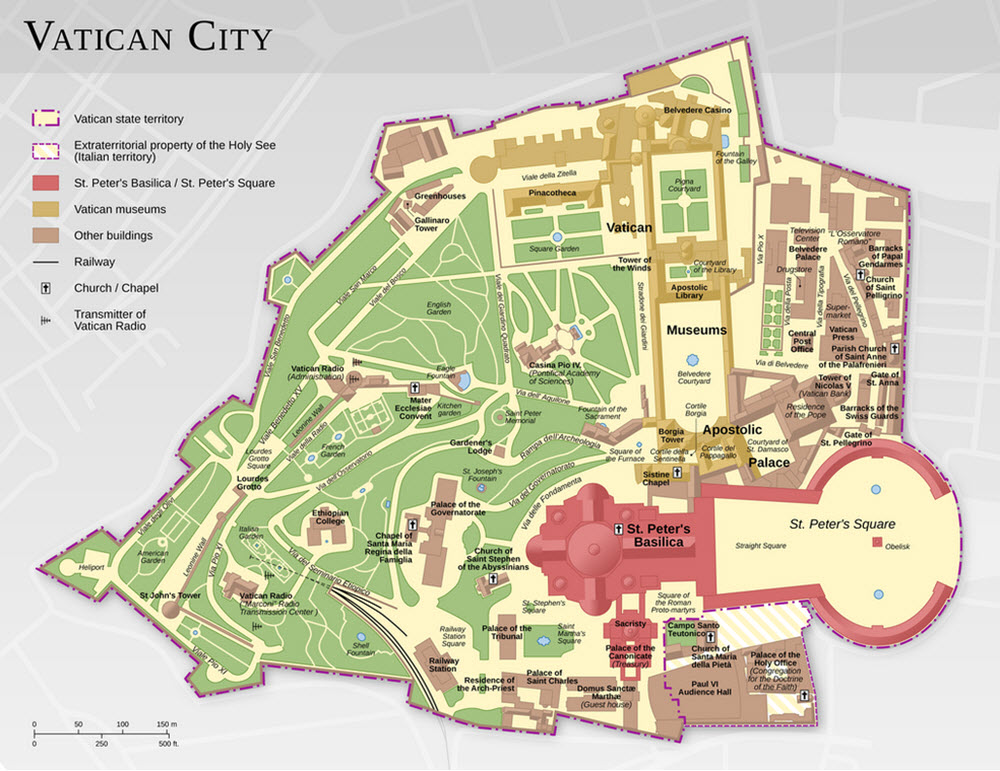The Vatican Museums (Latin: Musea Vaticana) are a group of art and historical museums located in the Vatican City.
Examples of included museums:
- Pinacoteca Vaticana (The Vatican Picture Gallery)
- The Collection of Modern Religious Art
- The Pio-Clementino Museum (for sculptures)
- The Chiaramonti Museum (for sculptures)
- The Gregoriano Etrusco Museum (for sculptures)
- The Gregoriano Egiziano Museum (for sculptures)
- The Vatican Historical Museum
Together, the museums hold around 70,000 works of art, of which roughly 20,000 are on display, divided over 54 galleries (sale). One of these galleries is the famous Sistine Chapel, where the ceiling was painted by Michelangelo and the Stanze di Raffaello by Raphael.
Data from 2017 show that in that year,over 6.4 million visits were made to the museums. The public can visit for free during the last Sunday of each month, which tend to create very long lines. For other days, you can purchase your ticket online or at one of ticket windows.
Examples of objects in the Vatican Museums
- The ceiling of the Sistine Chapel was painted by Michelangelo between 1508 and 1512. It is a cornerstone work of High Renaissance art.
- The four Raphael Rooms (Stanze di Raffaello) is a suite of reception rooms famous for their frescoes which were painted by Raphael and his workshop. These frescoes are some of the most highly regarded examples of High Renaissance art.
- The Vatican Historical Museum has a papamobili exhibition filled with the carriages and motorcars of popes and cardinals, including the first cars used by popes.
- The paiting St. Jermoe in the Wilderness, by Leonardo da Vinci, is on display in Pinacoteca Vaticania.
- Another example of a paiting in Pinacoteca Vaticania is The Entombment of Christ, by Caravaggio. This altarpiece was painted in 1603-1604 for a chapel within the church Santa Mariain Vallicella in Rome. This chapel now features a copy, since the original has been moved to Pinacoteca Vaticania.
- Augusto di Prima Porta is a full-lenght portrait statue of Emperor Augustus Caesar. It is on display in the Braccio Nuovo. It was discovered in 1863 in a villa in Prima Porta where Augustu’s widow Livia Drusilla lived after her husband’s death in AD 14. Carved in marble, the statue weighs around one metric tonne.
- Galleria delle carte goegrafiche contains a series of topographical maps of Italy, painted directly on the walls. It was commissioned by Pope Gregory XIII in 1580, and it located on the western side of the Belvedere Courtyard.
Where are the museums?
The Vatican Museums are located north of St. Peter’s Basilica.
Origin
The roots of the Vatican Museums goes back to 1506, when the marble sculpture “Laocoön and His Sons” was discovered in a vineyard near the Basilica of Santa Maria Maggiore in Rome The sculpture depicts the Trojan priest Laocoön and his two sons being attacked by enormous serpents. The sculpture was purchased from the vineyard owner by Pope Julius II, who put it on display in the Vactican.
Pope Benedict XIV, who held the title in 1740-1758, founded the Museum Christianum. In 1854, the Lateran Museum was founded by Pius IX, to house some already existing Vatican collections.


